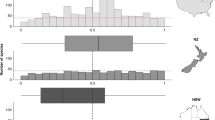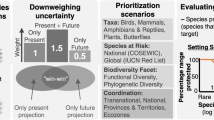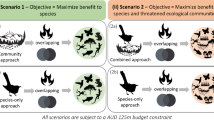Summary
The rate of extinction has accelerated to the point where we are probably losing one species per day right now, and we could well lose one million of Earth's 5–10 million species by the year 2000, and a good many more within the early decades of the next century. Plainly we cannot assist all species that face extinction within the foreseeable future. Conservationists have limited resources at their disposal, in the way of finance, scientific skills, and the like. Even were these resources to be increased several times over, we could not hope to save more than a proportion of all species that appear ‘doomed to disappear’: the processes of habitat disruption are too strongly underway to be halted in short order. But when we allocate funds to safeguard one species, we automatically deny those funds to other species. Already we support only a small fraction of all species under threat, and we may soon find ourselves in a situation where we can assist only a very marginal number of species facing extinction. Thus a key question arises: how are we to allocate our scarce resources in the most efficient way to safeguard species? Indeed we may now have reached a stage where there is merit in determining which species are ‘most deserving’ of a place on the planet. Agonizing as it will be to make choices along these lines, conservation strategy should be as systematically selective as possible. This means that we should design analytic methodologies to enable us to assign our conservation resources to achieve maximum return in terms of numbers of species protected. In essence, a ‘triage’ strategy. An expanded approach along these lines postulates a quantum advance in our planning of responses to the growing threatened-species problem: while the techniques of the past have certainly helped the situation, we cannot confront the much greater challenges of the future with an attitude of ‘the same as before, only more so’—the future will not be a simple extrapolation of the past, but will represent a qualitatively larger set of problems, which require an appropriately scaled-up response in our save-species campaigns.
Similar content being viewed by others
References
Ayala, F. J. (ed.) (1976)Molecular Evolution. Sinauer Associates, Sunderland, Massachusetts, U.S.A.
Barclay, A. S. and Perdue, R. E. (1976) Distribution of anti-cancer activity in higher plants,Cancer Treatment Report, 60 (8), pp. 1081–1113.
Bishop, R. C. (1978) Endangered species and uncertainty: economics of a safe minimum standard,American Journal of Agricultural Economics, 61, pp. 10–18.
Bonnell, M. L. and Selander, R. K. (1974) Elephant seals: genetic variation and near extinction,Science, 184, pp. 908–909.
Brooke, P. A. (1978)Cancer: Drug Utilization and Drug Prospects. Drug and Medical Follow-Up No. 78-29, Cyrus J. Laurence Inc., New York, U.S.A.
Carlquist, S. J. (1974)Island Biology. Columbia University Press, New York, U.S.A.
Cody, M. L. and Diamond J. M. (eds.) (1975)Ecology and Evolution of Communities. Harvard University Press, Cambridge, Massachusetts, U.S.A.
Elton, C. W. (1973) The structure of invertebrate populations inside tropical rainforest,Journal of Animal Ecology, 42, pp. 55–104.
Ewel, J. (ed.) (1980) Tropical succession,Biotropica, 12 (2).
Feinsinger, P. (1976) Organization of a tropical guild of nectarivorous birds,Ecological Monograph, 46, pp. 257–291.
Flesness, N. (1977) Gene pool conservation and computer analysis,International Zoo Yearbook, 17, pp. 77–81.
Frankel, O. H. and Soule, M. E. (eds.) (1981)Conservation and Evolution. Cambridge University Press, London, U.K.
Franklin, I. R. (1980) Evolutionary change in small populations. In M. E. Soule and B. A. Wilcox (eds.),Conservation Biology: An Evolutionary-Ecological Perspective, Sinauer Associates, Sunderland, Massachusetts, U.S.A., pp. 135–150.
Futuyama, D. (1973) Community structure and stability in constant environments,American Naturalist, 107, pp. 443–446.
Gilbert, L. E. (1980) Food web organization and conservation of neotropical diversity. In M. E. Soule and B. A. Wilcox (eds.),Conservation Biology: An Evolutionary-Ecological Perspective, Sinauer Associates, Sunderland, Massachusetts, U.S.A., pp. 11–34.
Conway, W. G. (1980) An overview of captive propagation. In M. E. Soule and B. A. Wilcox (eds.),Conservation Biology: An Evolutionary-Ecological Perspective, Sinauer Associates, Sunderland, Massachusetts, U.S.A., pp. 199–208.
Cordell, G. A. (1978) Alkaloids. InEncyclopedia of Chemical Technology, Vol. I. 3rd edn., John Wiley and Sons, New York, U.S.A., pp. 883–943.
Council on Environmental Quality (1980)Global 2000 Report. Council on Environmental Quality, Washington DC, U.S.A.
Diamond, J. M. (1975) The island dilemma: lessons of modern bio-geographic studies for the design of natural preserves,Biological Conservation, 7, pp. 129–146.
Douros, J. D. (1976) Lower plants as a source of anticancer drugs.Cancer Treatment Report, 60 (8), pp. 1069–1080.
Douros, J. D. and Suffness, M. (1980) The National Cancer Institute's Natural Products Antineoplastic Development Program. In S. K. Carter and Y. Sakurai (eds.),Recent Results in Cancer Research, 70, pp. 21–44.
Duke, J. A. (1980)The Gene Revolution. Office of Technology Assessment, U.S. Congress, Washington DC, U.S.A.
Ehrlich, P. R. and Ehrlich, A. H. (1981)Extinction. Random House, New York, U.S.A.
Eisenberg, J. F. (1980) The density and biomass of tropical mammals. In M. E. Soule and B. A. Wilcox (eds.),Conservation Biology: An Evolutionary-Ecological Perspective, Sinauer Associates, Sunderland, Massachusetts, U.S.A., pp. 35–56.
Gilbert, L. E. and Raven, P. R. (eds.) (1975)Coevolution of Animals and Plants. University of Texas Press, Austin, Texas, U.S.A.
Goodman, D. (1975) The theory of diversity-stability relationships in ecology,Quarterly Review of Biology, 50 (3), pp. 237–266.
International Marketing Statistics (1981)National Prescriptions Audit. I.M.S. Limited, Ambler, Pennsylvania, U.S.A.
Janzen, D. H. (1975)Ecology of Plants in the Tropics. Arnold Publisher Limited, London, U.K.
Kellert, S. (1980)Report of a study of American attitudes toward wildlife and threatened species. National Parks Service, U.S. Department of the Interior, Washington DC, and School of Forestry and Conservation, Yale University, New Haven, Connecticut, U.S.A.
Lack, D. (1976)Island Biogeography Illustrated by the Birds of Jamaica. University of California Press, Berkeley, California, U.S.A.
Levin, D. A. (1976) The chemical defences of plants to pathogens and herbivores,Annual Review of Ecology and Systematics, 7, pp. 121–159.
Lewontin, R. C. (1974)The Genetic Basis of Evolutionary Change. Columbia University Press, New York, U.S.A.
Lovejoy, T. E. (1974) Bird diversity and abundance in Amazon forest communities,Living Birds, 13, pp. 127–191.
Lovejoy, T. E. (1979)Which species to invite on the ark?, Paper presented at Internation Symposium on Use and Practice of Wild Animal Studbooks, Copenhagen, Denmark, 19–20 October 1979. World Wildlife Fund, Washington DC, U.S.A.
Lowe-McConnell, R. H. (1975)Ecology of Fishes in Tropical Waters. Arnold Publishers Limited, London, U.K.
MacArthur, R. H. and Wilson, E. O. (1967)The Theory of Island Biogeography. Princeton University Press, Princeton, New Jersey, U.S.A.
May, R. M. (1973)Stability and Complexity in Model Ecosystems. Princeton University Press, Princeton, New Jersey, U.S.A.
Miller, R. S. and Botkin, D. B. (1974) Endangered species, models and predictions,American Scientist, 62, pp. 172–181.
Myers, N. (1975) The cheetahAcinonyx jubatus in Africa.IUCN Monograph No.4. International Union for Conservation of Nature and Natural Resources, Morges, Switzerland.
Myers, N. (1979)The Sinking Ark. Pergamon Press, Oxford, U.K.
Myers, N. (1980)Conversion of Tropical Moist Forests. National Research Council, Washington DC.
Myers, N. (1982) The exhausted earth,Foreign Policy, 42, pp. 141–155.
Myers, N. (1983)A Wealth of Wild Species. Westview Press, Boulder, Colorado, U.S.A.
Odum, E. P. (1969)Fundamentals of Ecology. Saunders, Philadelphia, Pennsylvania, U.S.A.
Paine, R. T. (1966) Food web complexity and species diversity,American Naturalist, 100, pp. 65–75.
Poore, D. E. M. (1976)Ecological Guidelines for Development in the Humid Tropics. International Union for Conservation of Nature and Natural Resources, Morges, Switzerland.
Prance, G. T. (ed.) (1982)Biological Diversification in the Tropics. Columbia University Press, New York, U.S.A.
Raven, P. R. (ed.) (1981)Research Priorities in Tropical Biology. National Research Council, Washington DC, U.S.A.
Ralls, K., Brugger, K. and Ballou, J. (1979) Inbreeding and juvenile mortality in small populations of ungulates,Science, 206, pp. 1101–1103.
Soule, M. E. (1980) Thresholds for survival: maintaining fitness and evolutionary potential. In M. E. Soule and B. A. Wilcox (eds.),Conservation Biology: An Evolutionary-Ecological Perspective, Sinauer Associates, Sunderland, Massachusetts, U.S.A., pp. 151–170.
Soule, M. E. and Wilcox B. A. (eds.) (1980)Conservation Biology: An Evolutionary-Ecological Perspective. Sinauer Associates, Sunderland, Massachusetts, U.S.A.
Sinden, J. A. and Worrell, A. C. (1979)Unpriced Values: Decisions Without Market Prices. Wiley Interscience, New York, U.S.A.
Suffness, M. and Douros, J. D. (1979) Drugs of plant origin. In V. T. DeVita and H. Busal (eds.),Methods in Cancer Research, Vol. XVI, National Cancer Institute, Bethesda, Maryland, U.S.A., pp. 73–126.
Terborgh, J. (1974) Preservation of natural diversity: the problem of extinction-prone species.BioScience, 24, pp. 715–722.
Terborgh, J. and Winter, B. (1980) Some causes of extinction. In M. E. Soule and B. A. Wilcox (eds.),Conservation Biology: An Evolutionary-Ecological Perspective, Sinauer Associates, Sunderland, Massachusetts, U.S.A., pp. 119–134.
Usher, M. B. and Williamson, M. H. (eds.) (1974)Ecological Stability. Halstead Press, New York, U.S.A.
Van Dobben, W. H. and Lowe-McConnell, R. H. (eds.) (1975)Unifying Concepts in Ecology. W. Junk Publisher, The Hague, Holland.
Williams, N. H. and Dressler, R. L. (1976) Euglossine pollination ofSpathiphyllum (Araceae),Selbyana, 1, pp. 349–355.
Author information
Authors and Affiliations
Additional information
Dr Norman Myers is an expert in the study of endangered species and ecosystems. He is an international consultant in Environment and Development. This paper is based in part on findings of a project that he conducted for the World Wildlife Fund—US, to which grateful acknowledgment is made. The responsibility for all conclusions and recommendations remains, of course, with the author.
Rights and permissions
About this article
Cite this article
Myers, N. A priority-ranking strategy for threatened species?. Environmentalist 3, 97–120 (1983). https://doi.org/10.1007/BF02240157
Issue Date:
DOI: https://doi.org/10.1007/BF02240157




